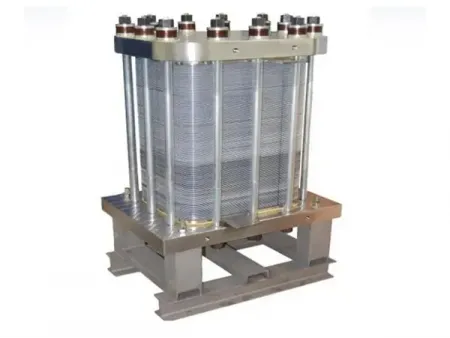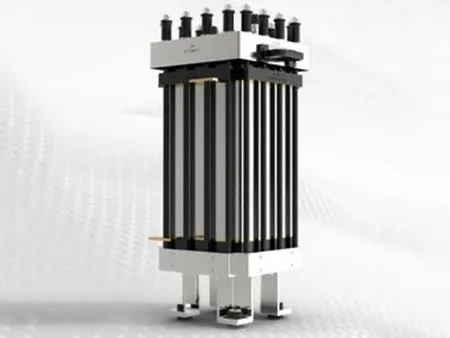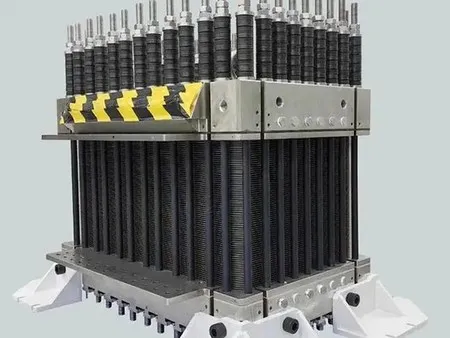PEM Electrolyzer
The PEM (Proton Exchange Membrane) electrolyzer is an electrochemical device that uses a differential in electron potential to split water molecules in the electrolyte into hydrogen and oxygen. This technology is highly efficient, environmentally friendly, and energy-saving, making it widely used in industries related to hydrogen production and storage, as well as in the energy sector. The following is an example of the process flow of a PEM electrolyzer in hydrogen production.
The key feature of PEM water electrolysis technology is its use of an organic polymer membrane that allows protons but not gases to pass through, replacing the diaphragms and electrolytes in traditional alkaline electrolyzers. This significantly reduces the size of the electrolyzer. Its core components include a proton exchange membrane and porous electrodes on either side, enhancing vertical transport capabilities, expanding the reaction space, and increasing the rate of hydrogen production. The technology is recognized for its safety, cleanliness, and high efficiency.
Features- High Efficiency
Exceeds international first-level energy efficiency standards, with system load adjustments ranging from 30% to 110%. The produced hydrogen meets high-purity requirements, with a single unit capable of producing up to 2000 Nm³/h. - High Integration
Offers both containerized and skid-mounted solutions with production capacities ranging from 5 to 5000 Nm³ in standard modules. The "N-to-1" multi-module design adapts to different application scenarios. - High Safety
Certified with HAZOP, SIS, and LOPA analyses. Comprehensive safety interlocks, and various alarm systems (such as hydrogen leak and chamber voltage alarms) are implemented. All units undergo static pressure and dynamic system tests before leaving the factory to ensure human and machine safety. - International Standards Compliance
Meets GB, CE, EN, AS, ISO, ASEM, IEC, and other domestic and international standards, fulfilling the requirements of customers in different countries and regions. - Digitalization
Supports digital delivery, operation, and maintenance. Facilities can operate unmanned on-site with capabilities for remote debugging, one-touch start-stop, monitoring, and data cloud storage. - Net Zero
Meets "CO2 net-zero emissions" requirements, with all water and alkali recovery processes designed to achieve zero liquid discharge; all solid waste recovery processes are designed to achieve zero solid waste discharge.




